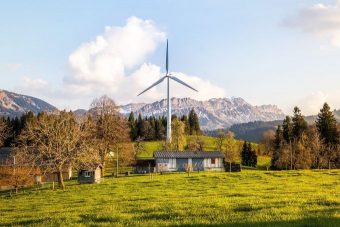
A new report from the International Renewable Energy Agency has concluded that India can meet a quarter of its energy demand with renewable energy sources by 2030.
The new study published by the International Renewable Energy Agency (IRENA) on Tuesday, Renewable energy prospects for India, concluded that increasing India’s renewable energy capacity to meet a quarter of its energy demand would end up saving twelve times more than it costs. Specifically, the report identified that increasing renewable energy deployment could save the Indian economy twelve times more than it costs by the year 2030, creating a significant number of jobs, reducing carbon dioxide emissions, and ensuring cleaner air and water — which in turn reduce health-related costs.
“Balancing economic growth and development, environmental protection, and energy security is a real challenge in India that can be tackled by enabling more renewable energy deployment,” said Dolf Gielen, Director of Innovoation and Technology at IRENA. “Through this report we have attained a better understanding of India’s renewable energy potential, that can assist in guiding the country’s energy policy in a way that is both economically and envionrmentally attractive.”
The authors of the report from the beginning create one of two roads India can walk down:
“In one direction lies a future heavily reliant on fossil fuels; and in the other, a more diverse energy mix based on greater use of renewables. If India follows the first route, it risks locking its energy system into today’s pattern – with increasing levels of air pollution, uncertainties around meeting its sustainability targets and concerns about supply and sourcing for coal, oil and natural gas.”
Many concerns have been leveled against India’s reliance upon fossil fuels — with the world’s second-largest coal demand after China. The authors of the report also point out that India is expected to be “the country most driving worldwide demand increases” in coal from 2020 onward, with demand expected to double in the next decade.
The other road, however, one more reliant upon renewable energy, is a road the Indian Government is attempting to explore and develop. The report outlines areas in which India can act to unlock the country’s increasingly-vast renewable energy potential. Specifically — and unsurprisingly, for anyone who has paid even the slightest bit of attention to India’s recent renewable energy capacity growth — solar energy will play a significant role moving forward, representing the country’s second largest source of renewable energy with 16%, followed by wind energy with 14% and hydropower with 7%.
However, the leading renewable energy sources that will drive India’s energy demand are various forms of biofuel — for transport, as well as for generating electricity and heat — which will account for 62% of final renewable energy use in the REmap in 2030 scenario described in the report.
“With one of the world’s largest and most ambitious renewable energy programmes, India is taking a leading role in the energy transformation both regionally and globally,” added IRENA Director-General Adnan Z. Amin. “India possesses a wealth of renewable resources, particularly for solar and bioenergy development, which can help meet growing energy demand, power economic growth and improve energy access, as well as boost overall energy security.”
The five Areas for Action outlined by the IRENA authors delineate key areas in which further work is needed for India to significantly increase its renewable energy development. They are: Establishing transition pathways for renewable energy, Creating an enabling business environment, Integrating renewable energy, Managing knowledge, Unleashing innovation.
Source: cleantechnica.com



